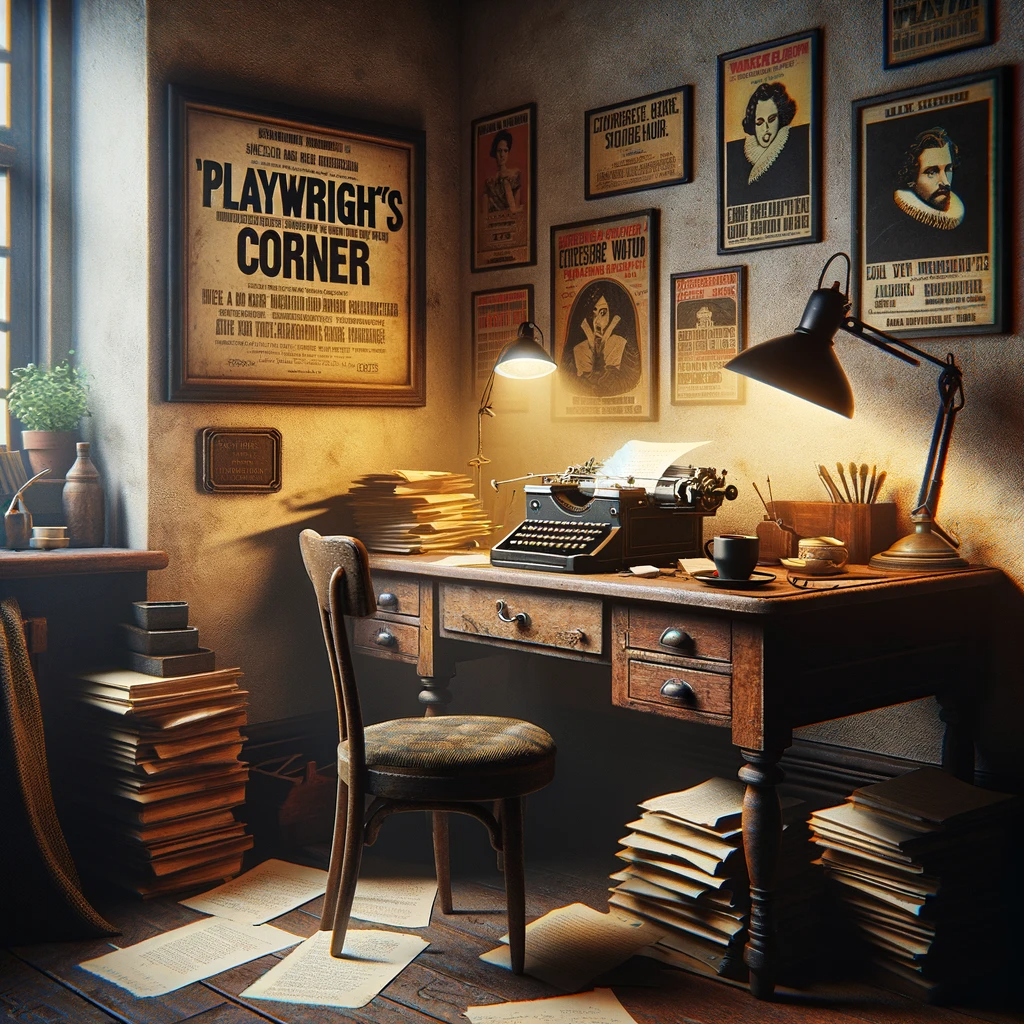Nestled between the bold marquee lights and the grand stage lies an often-unseen nook where the essence of theater is born—the Playwright’s Corner. It is here that playwrights weave narratives, not with threads, but with words and imbued with the power to transport audiences across time and space within the confines of the theater’s walls.
The Craft of Storytelling At the heart of every great theater production is a script, the blueprint of the world that will come to life onstage. The playwright’s craft is one of solitude and introspection, reflection and revelation. Veteran playwright Emma Thompson shares, “Each script is a journey. It begins with an idea, a whisper of a character, or a glimpse of a scene. The rest is about chiseling that idea into a story that can breathe on its own.”
The Dialogue Dance Playwriting is an intricate dance of dialogue. The words chosen by the playwright must feel authentic to the characters, resonating with the audience while advancing the plot. Newcomer to the scene, Miguel Sanchez, remarks, “Dialogue is the heartbeat of the play. I write not just to be heard, but to be felt. Each line must ring true to the human experience.”
Character Creation In the Playwright’s Corner, characters are born from the echoes of the playwright’s own experiences, from the stories that have left imprints on their soul. “Creating characters is like playing God with a pinch of psychology,” jokes Rachel Lee, a playwright known for her complex characters. “They must be as real as the person sitting in the last row of the theater.”
Themes and Threads Beyond characters and dialogues, playwrights weave larger themes into the fabric of their plays. The Playwright’s Corner is where societal reflections, existential questions, and the human condition converge. As seasoned playwright David Kim explains, “My plays are mirrors reflecting the world. I want audiences to see not just themselves but the larger picture, to question, to empathize, to change.”
The Revisions Process The journey of a play from first draft to final performance is often long and winding. Playwrights spend countless hours in the revision process, sculpting their narratives. “Revisions are where the real work happens,” asserts Anna Patel. “It’s a process of killing your darlings, as they say, to serve the greater good of the story.”
Collaboration with Directors and Actors The Playwright’s Corner is not isolated from the rest of the theater world. Playwrights frequently collaborate with directors and actors, morphing the written word into visual spectacle. “The transition from page to stage is a collaborative symphony,” states playwright Jonathan Hughes. “It’s where the static words I’ve written find movement and voice.”
The Future of Playwriting As the theater evolves, so does the art of playwriting. New voices emerge, telling stories that push boundaries and challenge norms. In the Playwright’s Corner, the future of theater is being written—one line, one character, one play at a time.
In this corner of the theater world, the power of words is the catalyst for creation. The Playwright’s Corner is a testament to the enduring magic of storytelling and the unseen labor that forms the foundation of all that unfolds onstage. It’s a place of potential, of possibility, and of the profound belief that from the humble act of writing can come the most spectacular of performances.
As the lights dim and the audience leans in, the words crafted in the quietude of the Playwright’s Corner find their voice, and the story begins anew.
This article is designed to celebrate the art of playwriting and the critical role playwrights play in the fabric of theater, offering insights into their processes and the importance of their work in crafting the narratives that come to life on the stage.


